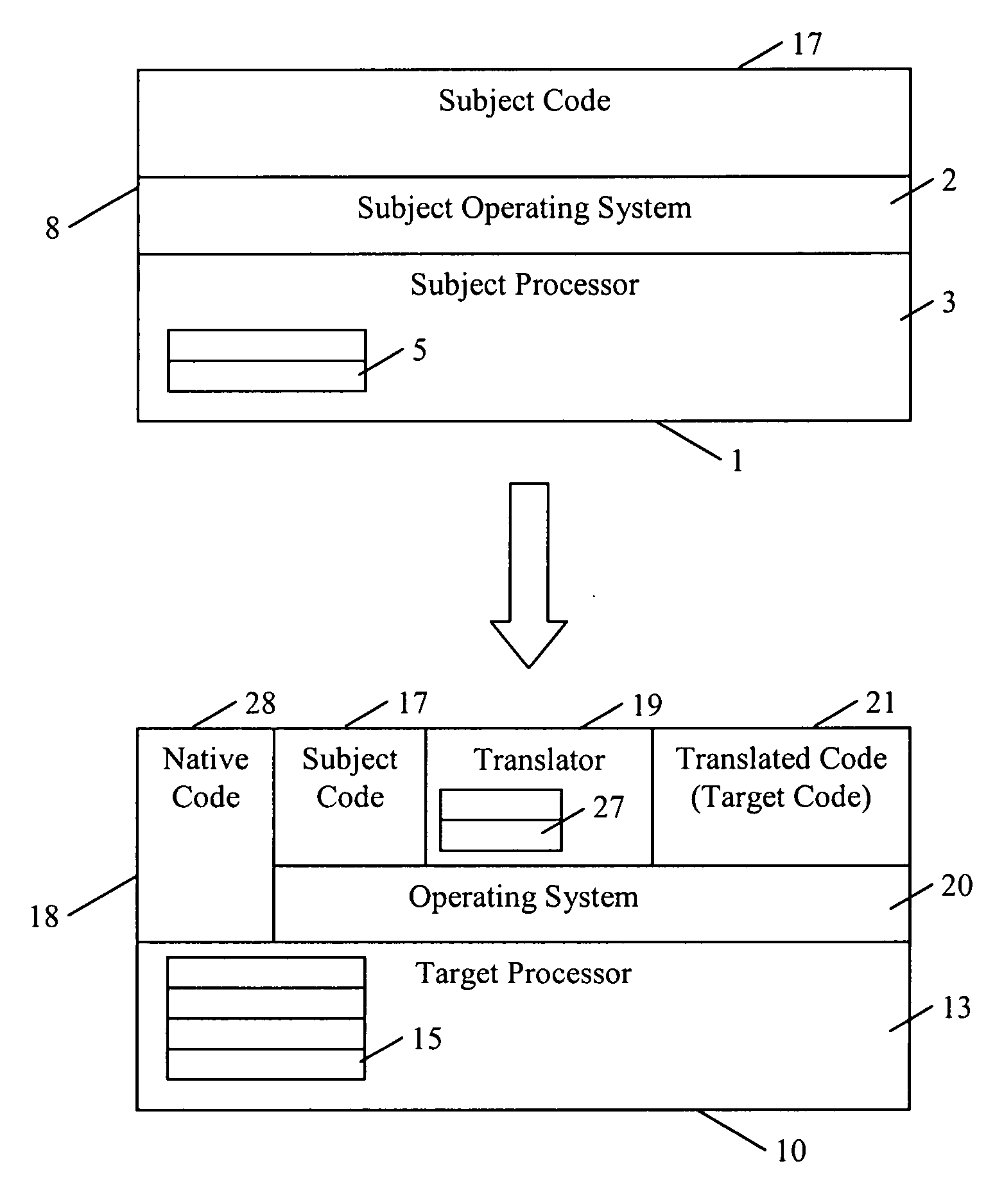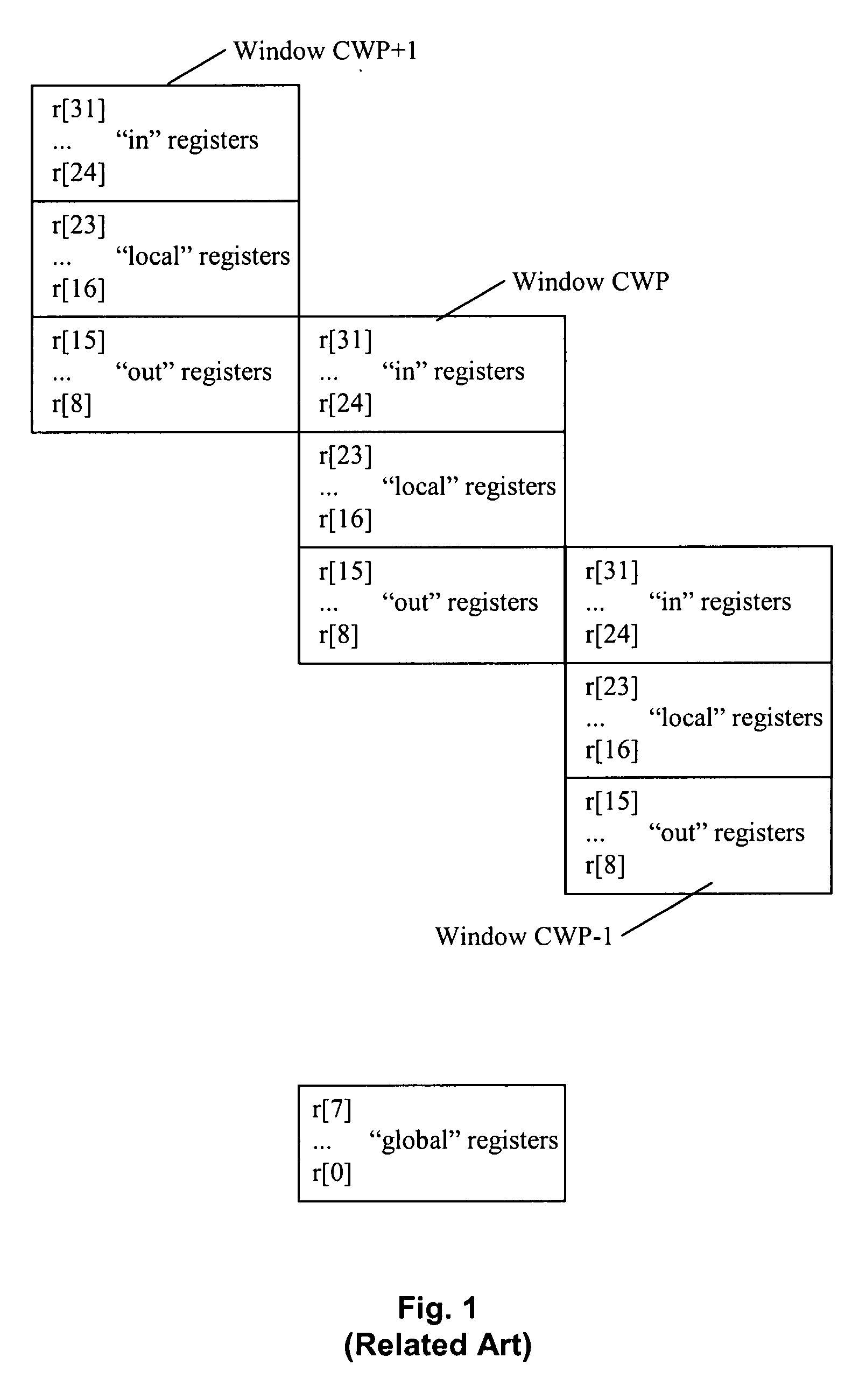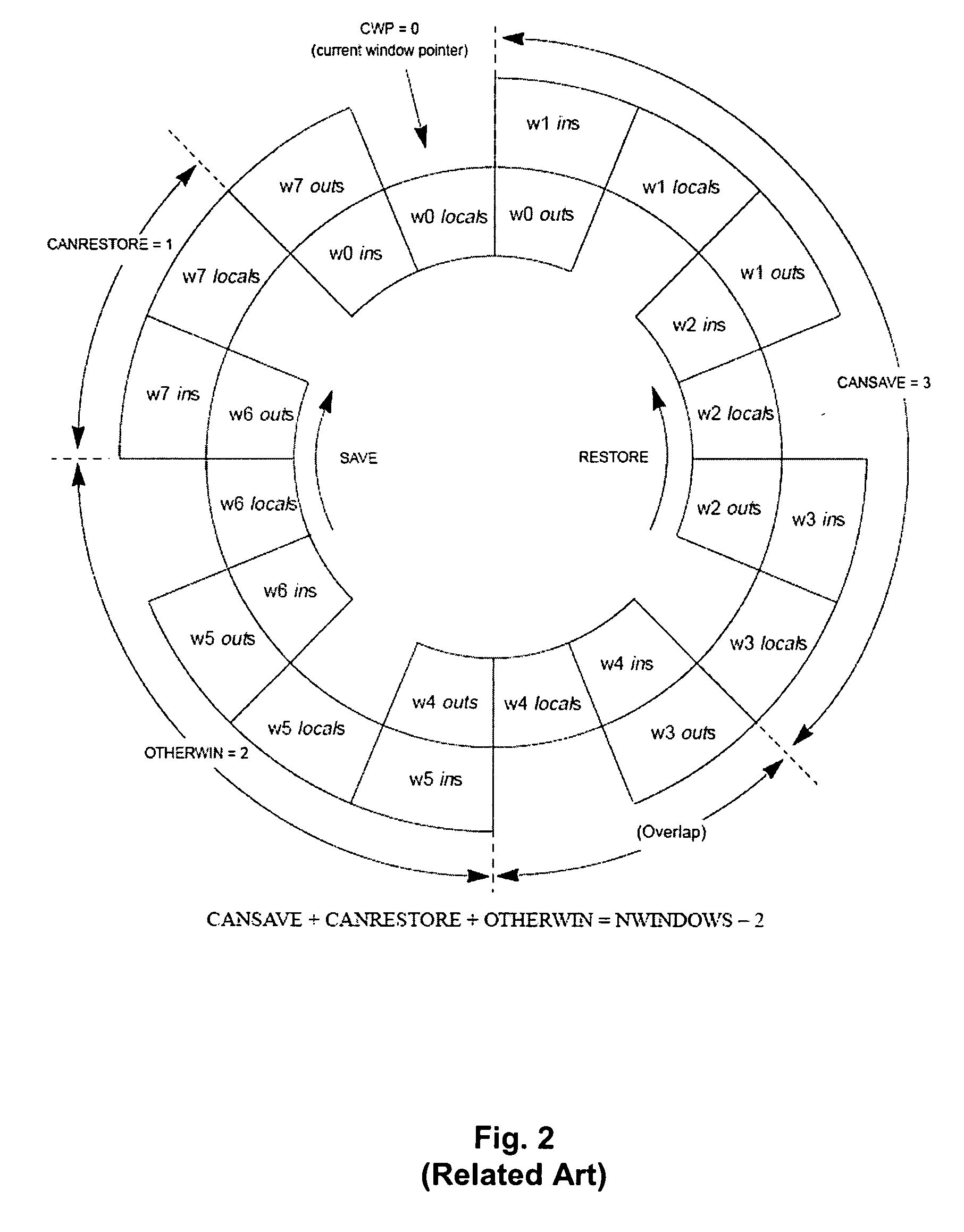Computer system and method of adapting a computer system to support a register window architecture
a computer system and register window technology, applied in the field of computers and computer systems, can solve the problems of inability to evolve in performance or market reach, competition for the available registers, and program code which is executable by one type of processor often cannot be executed in any other type of processor, so as to achieve efficient operation of the target computing system and avoid expensive overhead
- Summary
- Abstract
- Description
- Claims
- Application Information
AI Technical Summary
Benefits of technology
Problems solved by technology
Method used
Image
Examples
first embodiment
[0063]In this first embodiment, the relevant SR stack entries 401 are addressed by considering the identified windowed subject register references 175, and with respect to the stack pointer SR_SP. Conveniently, the stack pointer SR_SP is updated at the end of each target block in response to the identified register window movement information 176 found at the end of each subject block. That is, the target code 21 is generated to update the SR stack pointer SR_SP to track the current position of the head of the SR stack in response to the SAVE and RESTORE register window movement information 176 obtained by the decoder 191.
[0064]Here, the generated target code 21 contains target instructions which cause the SR stack pointer SR_SP to be updated to move forward down the SR stack 400 by sixteen 64-bit entries 401 for each identified SAVE type movement, or roll back by sixteen entries for each identified RESTORE type movement. Here, the stack pointer is updated by sixteen entries rather ...
second embodiment
[0080]The decoder unit 191 of the translator 19 identifies the windowed subject register references 175 and the register window movement information 176 as discussed above. Further, the identified register window movements 176 are used to derive a frame offset 178 which is expressed in the target code 21 as a frame offset from the SR_SP stack pointer. Then, each of the register references 175 provide the displacement 177 from this frame offset 178 to address a relevant entry 401 in the SR stack 400. Hence, the stack pointer SR_SP may now remain constant throughout the target code block 21a, even though two or more frames 410 of entries 401 are under consideration during the block. The second embodiment shown in FIG. 8 in particular allows the translator to inline leaf functions within a single block of target code, where a leaf function is a function which does not itself call another function. The function is inlined by treating both the caller and the callee subject code instructi...
PUM
 Login to View More
Login to View More Abstract
Description
Claims
Application Information
 Login to View More
Login to View More - R&D
- Intellectual Property
- Life Sciences
- Materials
- Tech Scout
- Unparalleled Data Quality
- Higher Quality Content
- 60% Fewer Hallucinations
Browse by: Latest US Patents, China's latest patents, Technical Efficacy Thesaurus, Application Domain, Technology Topic, Popular Technical Reports.
© 2025 PatSnap. All rights reserved.Legal|Privacy policy|Modern Slavery Act Transparency Statement|Sitemap|About US| Contact US: help@patsnap.com



